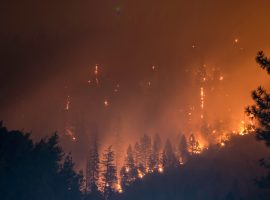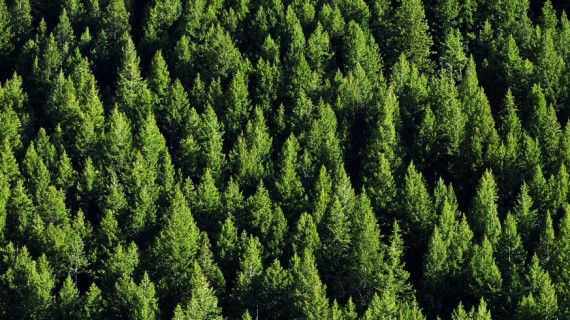Sustainable forest management is a necessary condition to mitigate climate change; however, it is not sufficient. In order for forests to help stabilize the climate, further measures are needed, including the expansion of forest land, the reduction of deforestation, and governmental commitments.
What is the problem?
Earth is presently facing the destructive effects of global warming, the permanent change in the planet’s overall temperature.
This situation is believed to be primarily caused by human activities; indeed, carbon dioxide (CO2) levels have rocketed since the industrial revolution in 1950. The reasons for the accelerating harmful effects of CO2 emissions include the burning of fossil fuels, animal waste, and deforestation.

The increase in the levels of carbon dioxide is causing the melting of polar caps, the acidification of oceans, and natural disasters that are becoming more frequent and intense. Consequently, plants and animals are struggling to adapt to climate change and, without them, no human being can exist anymore.
- Photo by Matt Broch, via Unsplash
- Photo by Australian Institute of Marine Science, via Google Creative Commons licenses
- Photo by Matt Howard, via Unsplash
Why are forests important in mitigating climate change?
Together with oceans, forests are able to limit the emissions of carbon dioxide and mitigate climate change. Nevertheless, in only a couple of thousands of years, humans have wiped out 80% of Earth’s original forest cover.
The reason why forests are fundamental is not only because they protect ecosystems, but also because the photosynthesis process allows plants and trees to absorb the CO2 in excess, which is in turn used to grow branches and produce fruits.

Hence, forests represent a natural solution to reduce the amount of carbon dioxide being released into the atmosphere and prevent the adverse consequences of global warming.
What is a potential solution against deforestation?
Afforestation, the expansion of land dedicated to forest use, represents a potential solution to lower carbon dioxide levels. However, the artificial expansion of forestry resources poses the risk of decreasing biodiversity without absorbing a significant amount of CO2.
The main problem is that afforestation projects have favored the cultivation of monocultures, thus threatening the variety of animals and plants. Furthermore, for forests to be capable of mitigating climate change, afforestation projects must be viewed with particular attention to ensure compliance with systemic and technical details.
Nevertheless, without forests, the climate crisis would have effects that are even more intense.
How can we contribute?
Daily, in our small way, we can contribute to climate change mitigation by adopting a more sustainable lifestyle.
- Following a plant-based diet to reduce the consumption of meat;
- Shifting to renewable energy, such as solar panels;
- Reducing the use of cars, or using electric vehicles;
- Recycling;
- Supporting forestation’s projects
And, more importantly, spreading knowledge and concerns about the climate crisis.







